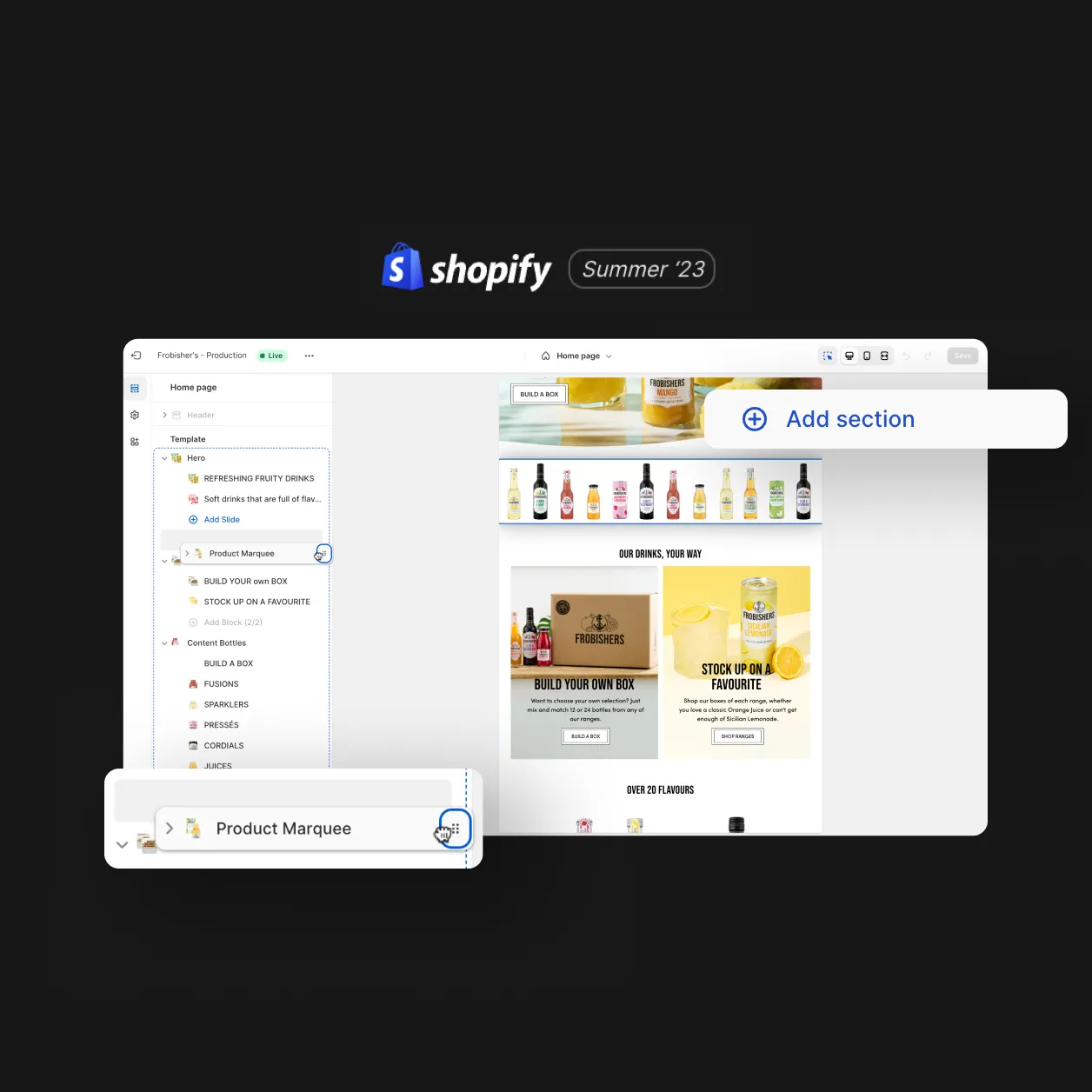
Since the early days of direct-to-consumer marketing, companies have been looking for ways to connect with their customers more directly. The latest incarnation of this need for brands to authentically build loyalty from customers is CTC, or Connect To Consumer. Here’s everything you need to know about this new form of brand building that is challenging the D2C landscape.
What is CTC (Connect To Consumer)?
Connect To Consumer (CTC) has been spoken about heavily by Shopify and its President, Harley Finkelstein (definitely worth following on LinkedIn if you don’t already). The phrase was headline of the Shopify Summer 2022 Editions Report and essentially describes a channel agnostic approach to brand building. Consumers experience brands through multiple touch points, to a customer they don’t think of online/offline/performance media or event – they just think of the brand and whether or not they want to be associated with it.
Connect To Consumer articulates the needs for businesses to expand and strengthen their reach by creating relationships with their customers on a more personal level, in a channel agnostic way. For those who were in marketing in the 2010’s – ‘Omnichannel’ was the word of 2012 and I remember pulling many decks together centred around the conversation. The concept of a brand going deeper than a piece of performance advertising has always been clear to those who have seen the rise and fall of trend-led products. Many DTC brands burn twice as bright but last half as long as more established ‘slow cooked’ brands do.
Is CTC replacing DTC?
If you’re a DTC brand manager, founder or investor – don’t panic. Ecommerce isn’t going anywhere, it’s simply evolving into a new era.
Articles such as Wired’s ‘Direct-to-Consumer Is Dying. It’s Time for a New Paradigm‘ is certainly attention grabbing and dances close to click-bait. DTC boomed in 2020 and there was a huge emphasis on fast-tracking more traditional brands into DTC experiences with around 60 percent of consumers purchasing from a direct-to-consumer brand at least once in 2021. However, as with any sharp shift in socio-economic behaviour, the pendulum was inevitably going to swing the other way. And 2022 did see a significant drop in revenue for DTC only brands due to issues with supply chain, a sobering economic outlook and changes in privacy that threw in new challenges with performance marketing capabilities.
2023 will inevitably see a ‘thinning of the herd’, an unpleasant but necessary phase to business. Those left standing will have worked particularly hard at retail opportunities and embraced new technology to diversify their revenue streams – something that isn’t ground-breaking in business but often overlooked with far too much emphasis placed on paid social ads.
What technology should DTC brands embrace for a CTC experience in 2023?
If omnichannel focused on a blend of retail, mobile experience and core website – CTC is the same but going deeper with social shopping and fuelled by the inception of community driven web3 projects.
If you’re not already familiar with Google’s ‘The Messy Middle’ – now is the time to read up. It explores the crux of the marketing problem that is emotional vs logical decision making. With abundant information and unlimited choice, consumers have learned to manage using a range of cognitive shortcuts that can help with decision making and the power of visibility – simply showing up – during that process is vital. Again, this is nothing new and while this research from Google does go far deeper, it echos the sentiment that the primary goal of a brand is to be front of mind and part of the consideration set.
For 2023, where consumers go to research has shifted. Social media is being used more as a search engine, and the platform of choice is becoming TikTok, which was downloaded more than Instagram in the first quarter of 2022. Bloomberg also reports the average U.S. TikTok user spent 29 hours a month on the app compared to 8 hours for the average Instagram user. The partnership between Shopify and TikTok has been a huge success for many DTC brands and the rise of shoppable content has been significant in ensuring brands ‘show up’.
Alongside this, the consumer journey for web3 products are completely different to conventional ecommerce offerings. Platforms like Twitter and Discord are being utilised to cultivate community and in turn, create word-of-mouth marketing agents. Decentralised platforms are gaining traction with projects offering rewards programmes that can be a powerful new revenue stream and another avenue to encourage advocacy on behalf of their customers. Exclusive NFTs will also play a part in product desirability. Web3 will undoubtedly transform the ways users engage with and experience brands.
CTC vs DTC Summary
In conclusion, while the traditional DTC model still has potential and will remain a cornerstone of many brands, 2023 will see more emphasis on CTC – creating relationships with customers that go beyond transactional sales. Embracing new technologies to create deeper connections with customers, increase visibility and diversity revenue streams is key for those looking to stay ahead.
DTC isn’t dying, it’s simply evolving and those that embrace the opportunities presented by a CTC model will be the ones who succeed in 2023.
Design
Inspiring behaviour change through visual experiences. Our digital design services ensure instant clarity and visuals that cut-through in a cluttered market.




